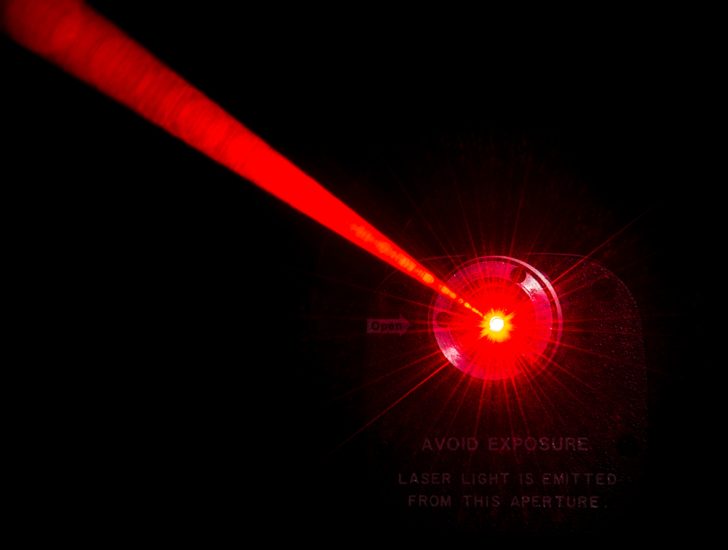In a new blog post, Skylock’s Chief Technology Officer Ofer Kachan has questioned the feasibility of applying laser weapons to counter-UAS applications. “While the concept sounds exciting, its technological feasibility remains uncertain at this stage” he says.
According to the post:
“Counter-drone laser weapons are advanced defence systems that utilise high-energy laser to neutralise unmanned aerial vehicles (UAVs) or drones. Using lasers, these systems direct a focused beam of light at the target drone, causing it to malfunction, overheat, or lose control, ultimately rendering it inoperable. To protect sensitive installations and airspace from unauthorised drone activity, governments and defence organisations around the world are increasingly developing laser-based countermeasures as drones become more sophisticated and widely used for civilian and military purposes.
Skylock‘s CTO, Ofer Kachan, calls counter-drone laser weapons “an exciting buzzword“. Yet he pours some cold water on using these weapons: “The application strategy of counter-drone laser weapons is still limited compared to other C-UAS solutions. While the concept sounds exciting, its technological feasibility remains uncertain at this stage”.
“BAE Systems has successfully tested its laser-guided C-UAS. A series of trials demonstrated the effectiveness of these kits in detecting, tracking, and intercepting drones accurately. The Japanese multinational corporation Kawasaki Heavy Industries has developed an anti-drone laser system. Using radar and infrared cameras, the system detects and tracks incoming drones, and a high-powered laser neutralises them.
“Kawasaki funded the development of the system at the behest of Japan’s Acquisition, Technology, and Logistics Agency (ATLA), an organisation similar to DARPA (Defense Advanced Research Projects Agency) that aims to incorporate new technology into Japan’s self-defence forces. The showcased laser system featured a tracking mechanism, a high-energy laser, a gimbal for stabilising and maintaining the laser’s focus, and a 2-kilowatt power source. With a drone destruction range of just 100 meters (328 feet) and a tracking capacity of up to 300 meters (984 feet), the system was mounted on a Mule Pro-FX, a three-seat all-terrain vehicle retailing for $15,000.
“At the Defence and Security Equipment International (DSEI) Japan 2023 exhibition, various companies and defence organisations showcased their latest counter-drone solutions. The event highlighted innovative technologies, including advanced radar systems, infrared cameras, and high-powered lasers designed to detect, track, and neutralise unauthorised drones. DSEI Japan 2023 provided a platform for industry leaders to collaborate and discuss the future of counter-drone technology.
“Mitsubishi Heavy Industries (MHI) showcased a 10-kilowatt fibre laser capable of targeting unmanned platforms up to 1.2 kilometres (0.7 miles) away. This counter-drone system can be mounted on ground vehicles and utilised by Japan’s ground self-defence force, naval, and air units. MHI representatives stated that for the past two years, the company has consistently carried out outdoor field tests with its high-energy laser-based C-UAS prototype on Tanegashima, an islet located south of Japan’s southernmost main island in Kagoshima prefecture. An MHI official, quoted by The Diplomat, stated that the system can be employed by any self-defence force to target aerial objects.
“As technology advances, the future of counter-drone laser weapons remains to be seen. Ofer Kachan concludes: “Counter-drone laser weapons are costly systems with a relatively limited and short range. To support their capabilities, they require an energy infrastructure that is robust, stable, and accessible. Additionally, their use in urban environments and airports is highly restricted due to concerns about collateral damage”.
“Large armies might find these laser weapons suitable, but government entities, like those that work with Skylock, will likely continue using existing C-UAS technology”.
“When electronic warfare, jammers, spoofers, and cyber measures fail, counter-drone laser weapons serve as a last ‘hard kill’ line of defence. Although a good last-resort option, many armies still opt for machine gun projectiles or drone-on-drone confrontations as their kinetic solution due to their proven track record. Counter-drone laser weapons are still limited in their capabilities and have yet to establish themselves as a reliable and proven technology”.
For more information
https://www.skylock1.com/blog/are-counter-drone-laser-weapons-going-to-change-the-c-uas-field/?utm_source=LinkedIn&utm_medium=Post&utm_campaign=Blog+post+-+Laser+C-UAS+article
(Image: Shutterstock)




